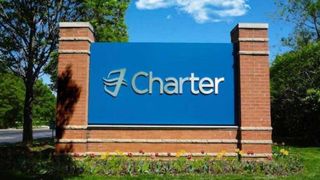Charter Puts Wireless Broadband to the Test

Charter Communications has yet to detail pricing and packaging on a mobile service that will debut later this year, but it’s making some progress with wireless broadband trials that are tapping into the 3.5-GHz spectrum band.
In a filing to the Federal Communications Commission in late January, Charter said its testing in that swath of spectrum in rural communities has delivered speeds of at least 25 Megabits per spectrum downstream and 3 Mbps upstream.
Charter put forth those numbers as the FCC moves on a proposed rulemaking on changes to the use of Priority Access Licenses (PALs) in the range of 3.55 GHz to 3.7 GHz, a slice of spectrum referred to as CBRS, or Citizens Broadband Radio Service. Charter specifically wants to expand the current PAL geographic license size from census tracts to county-sized licenses.
The Stamford, Conn.-based cable operator likewise fears that increasing the licensing size, rather than supporting footprints that align with a cable operator’s existing deployments, could limit the 3.5-GHz band to only the largest incumbent wireless carriers, adding that future deployments will likely use extensive small-cell deployments that are not well suited for large geographic license areas that tend to be the domain of macro-cell deployments.
With the “right rules,” the 3.5-GHz band could emerge as a cost-effective way to deliver fixed wireless service in rural areas, Charter said.
Giving Underused Spectrum A Flight Test
That batch of spectrum Charter is eyeing has been underutilized (the U.S. Navy taps into it for flight operations for aircraft carriers, for example) but is now being opened up to additional use cases, including enhancing services that currently tap licensed spectrum.
Broadcasting & Cable Newsletter
The smarter way to stay on top of broadcasting and cable industry. Sign up below
In addition to incumbent usage, CBRS, as a shared section of spectrum, will also be used to support non-incumbent PALs and general authorized access, with at least 80 MHz of spectrum always available for the latter case. Any spectrum that is not sold for priority access will go back into the general access pool.
Cable operators are eyeing CBRS in part to complement their mobile virtual network operator (MVNO) agreements so they can offset (or at least lower) some of the network costs associated with new mobile services. Charter, as Comcast has already done with Xfinity Mobile, will lean on an MVNO agreement with Verizon Wireless for a service that’s expected to debut later this year.
Charter is asking the FCC to adopt a county-sized geographic licensing scheme while also mandating performance requirements for PALs in that band.
“Although Charter supports the partitioning and disaggregation of PALs, crafting a robust secondary market is no substitute for adopting licensing policies that incentivize new entrants as well as small and large providers,” Charter explained.
Charter said it believes that the use of county-sized geographic licensing areas “strikes an appropriate balance” for emerging opportunities while also enabling new entrants to leverage existing infrastructure. The cable operator likewise held that the speeds it has demonstrated in the 3.5 GHz band could be supported using county-sized licenses.
“The 3.5-GHz band remains an important component of Charter’s wireless strategy,” the MSO told the FCC. “The adoption of appropriate rules that encourage deployment and investment by new entrants will also be a critical element of Charter’s evaluation of 3.5-GHz licenses as part of its overall wireless strategy.”
